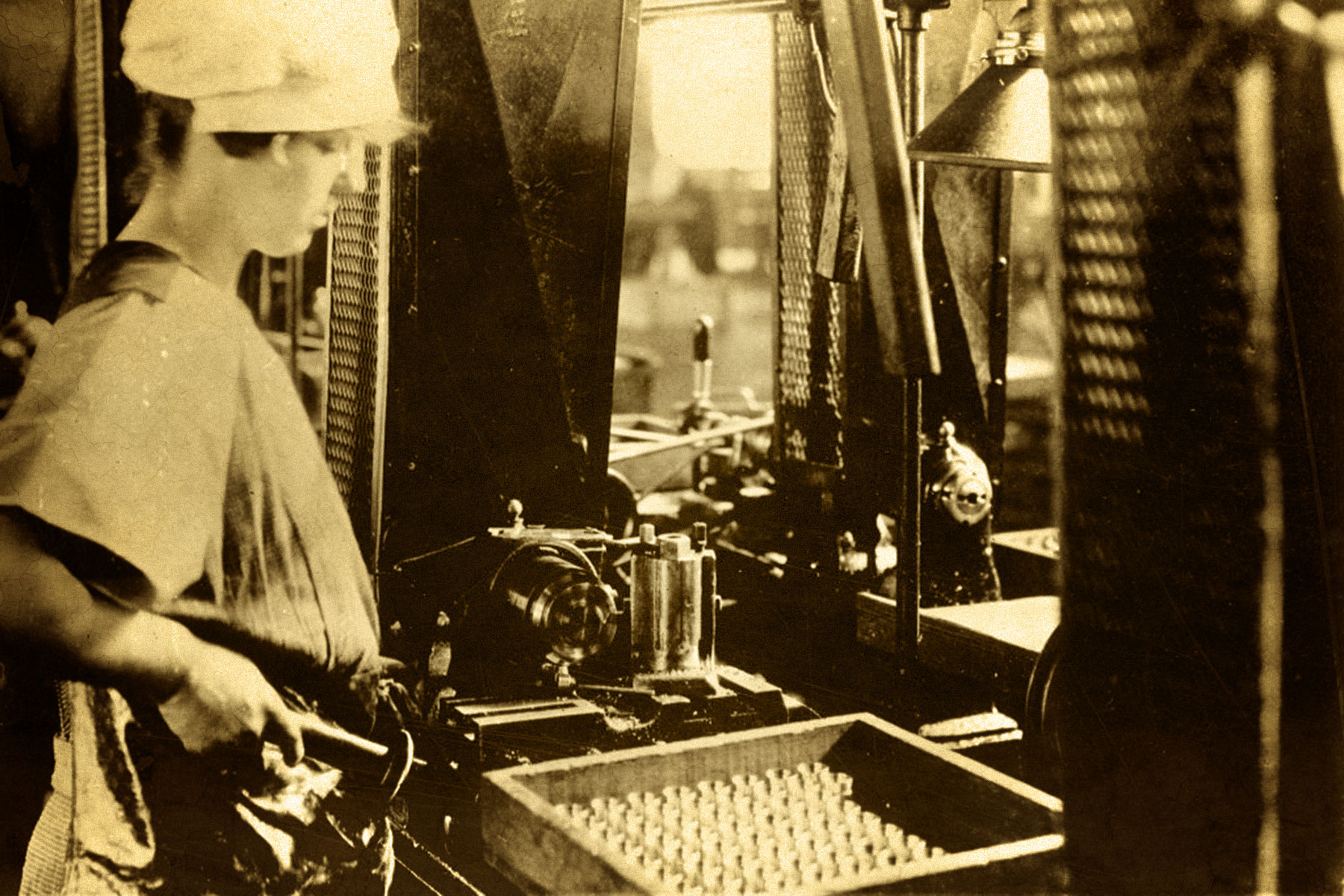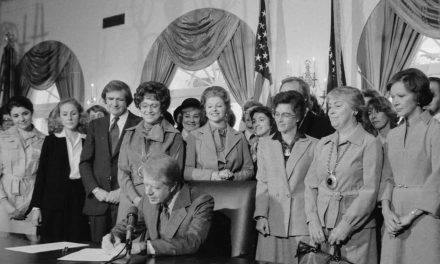
Many Milwaukeeans fought the Kaiser. The women of Briggs Loading Co. did so in their underpants.
In his corporate history, The Legend of Briggs & Stratton (Write Stuff Syndicate, 1995), Jeffrey L. Rodengen wrote, “Long Victorian-style dresses were serious hazards, since they could become caught in rotating machinery and belts. Women took to wearing ‘bloomers’ pants-like garments originally intended as undergarments.”
In time the government took notice and ordered coveralls be issued to the workers, ending an amusing footnote to an otherwise deadly serious business.
On May 7, 1918, the Briggs Loading Co. was incorporated. The company was an offshoot of Briggs & Stratton, which had been founded in Milwaukee in 1908 by Stephen Briggs, an electrical engineer, and Harold Stratton, a grain merchant. Just nine days after its incorporation, Briggs Loading Co. secured a contract to assemble 1 million Type VB rifle grenades and detonating fuses. More contracts followed.
Other companies produced the materials for Briggs to assemble. Both International Harvester and Cutler-Hammer had contracts to produce rifle grenades and probably supplied raw castings to Briggs. Newport Chemical at the time operated a 300-acre plant on the shores of Lake Michigan in Oak Creek producing ingredients for high explosives.
The women at Briggs cleaned the parts, packed the casings with explosives, added fuses, varnished and painted the grenades, and packed them for shipment.
Although Briggs & Stratton owned a large factory downtown, the new venture was located far to the north in hastily built wooden buildings opposite the north end of today’s Estabrook Park. Nearby quarries dug by a cement-mining operation provided the company with a safe place to test munitions. Another reason for the out-of-the-way location may have been fear of an accident involving high explosives – bad enough in the remote location but far worse in the middle of the city.
It was a real concern, for the work was quite dangerous. In 1916, a munitions factory explosion near Leeds, England, killed 35 women. The Milwaukee plant escaped a similar fate while maintaining an extraordinary rate of production. In just 18 months, the woman assembled 5.4 million grenades.
On November 11, 1918, Germany signed an armistice, ending a conflict that had cost 17 million lives including those of 116,700 Americans. When the news of the armistice reached Milwaukee residents poured into the streets in a spontaneous outpouring of joy. An impromptu parade took place and the woman of Briggs Loading Co. formed one of the groups marching through the city.
The Milwaukee Journal reported, “They wore the government assigned safety pantaloons and were loudly cheered along the line of march.”
Originally published on Milwaukee Notebook as Grenades and Underwear















